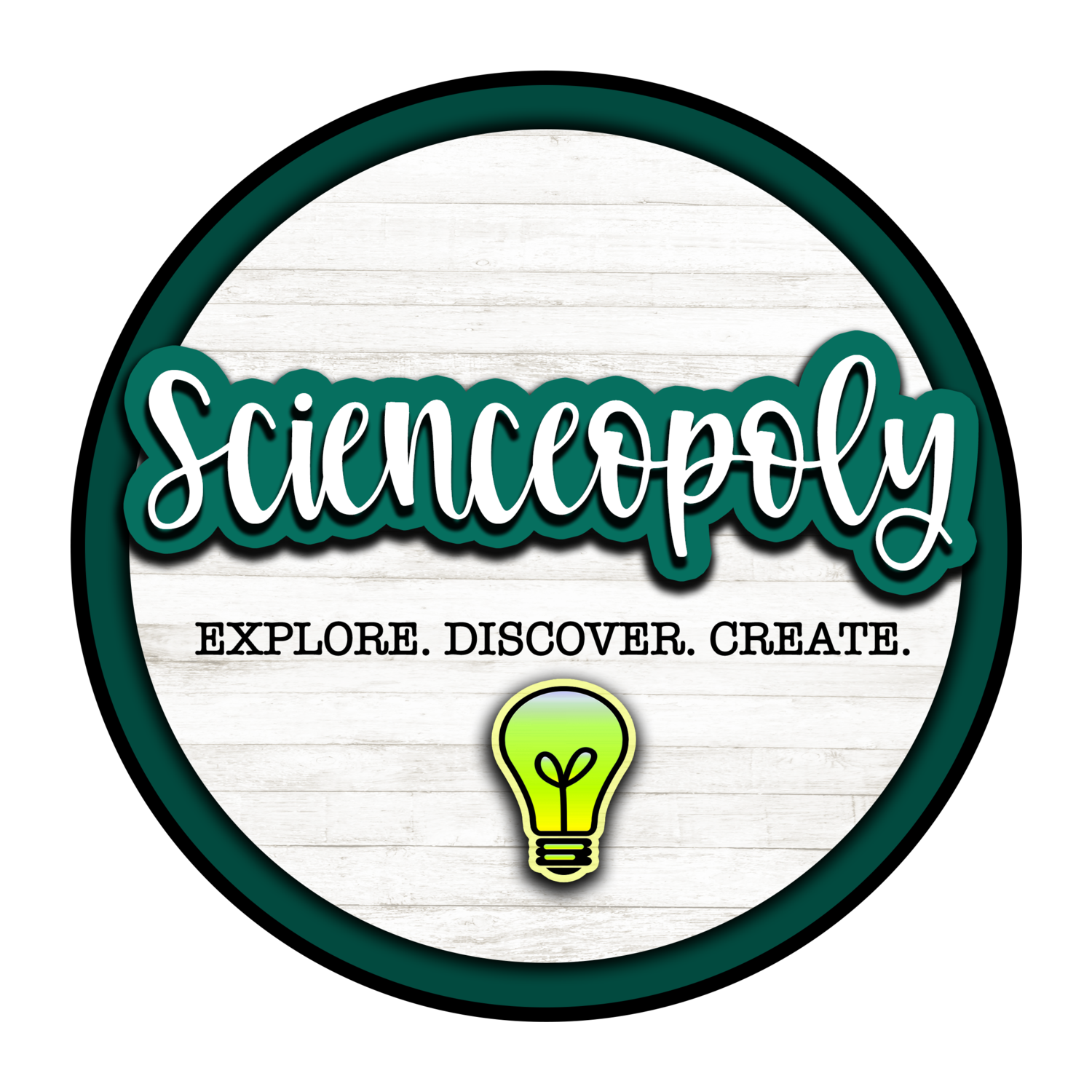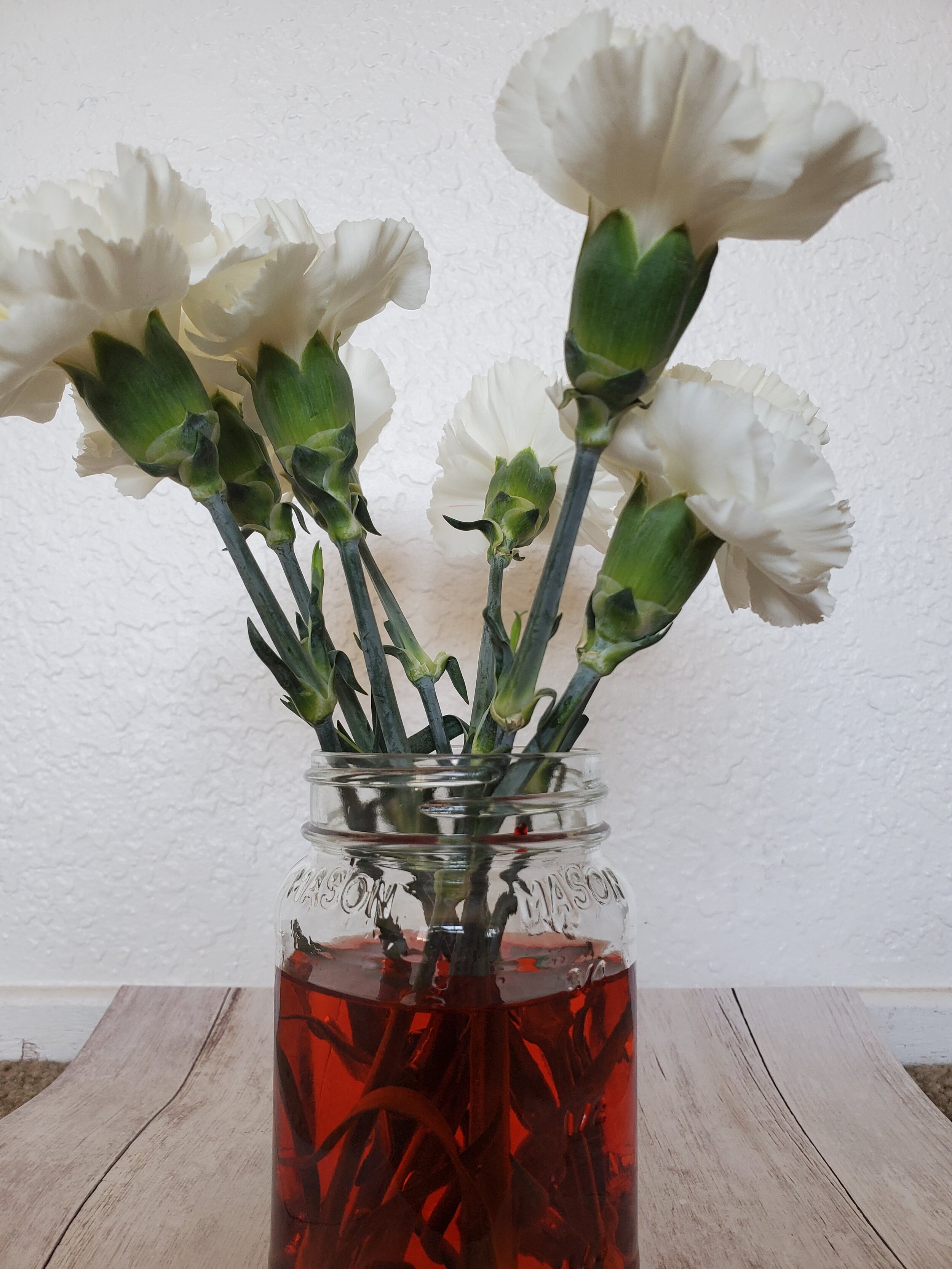A hands-on approach to xylem and phloem
If you teach science, or interact with students who have taken an elementary or middle school science course, there is a good chance they have taken part in a lab that demonstrates how colored water can change the color of a plant. Sometimes this lab is carried out with white carnations (a little pricey, but my preferred method) and sometimes with celery, but the end result is always the same. Students observe the seemingly magical conversion of a plant’s color simply by adding food coloring to its water source. It’s a pretty common lab and, admittedly, one of my favorites.
I love seeing this lab utilized with younger students. It’s such a simple, highly observable phenomenon that young kids especially (but even middle schoolers- though they will try to act very nonchalant about it) find exciting. And after all, isn’t that one of the main objectives of science education k-8? To expose students to everyday phenomenon that gets them excited, asking questions, and wanting to find out more?
I have utilized the Color-Changing Carnations lab for many years in my career as a science educator. Many times, I had students in my classes that would announce, either with pride or with boredom, that they had in-fact completed this lab before. They knew what would happen. But that was okay because, as 7th graders, we would be moving the lab forward, not stopping at the simple observation of the color change but dissecting the plant after, exploring the interior of the stem and even viewing it under the microscope. We would bring all the reading, lecture notes, and information about the xylem and phloem to life by extending the lab beyond simple observation.
For many years, I did just this. I followed this pattern in teaching. I lectured, we read, we viewed lovely detailed, artistic renditions of the xylem and phloem and then, finally, we would view the phenomenon and complete our dissections. These weren’t bad lessons. Any time we give students an opportunity to engage in the science and go beyond the reading and artistic renditions, any time we let them formulate an understanding of the concepts on their own, that is a win for science education. But, somewhere along the way, it occurred to me that I had taken the wonder and mystery out of the phenomenon before ever giving the students an opportunity to ponder it.
I’ve written about this before here, but I think it’s worth noting again. Flipping the science experience, particularly in k-8 classrooms, is a valuable educational experience. It builds a hands-on, concrete, shared experience for all students so that all students can participate in and contribute to a shared discussion. Let’s be honest, some (if not most) of our students get lost in the language of science, bogged down by the complex vocabulary that is inherent to science text, unless they have a concrete experience to fall back on when they are doing the reading. Here is how I create this experience for a plant vascular lesson in my Life Science classes:
Create the Experience First…
Without much detail or information, I have students set up the phenomenon. Students are given white carnations, glasses filled with water, and their choice of food colorings with which to color the water. I always try to give each student their own flower and I have found that if I talk with the florist at my local grocery store, they are often willing to give me a discount on the flowers (sometimes I even score them for free!). Depending on the space I have available in my classroom, I will let each student have their own cup and choose their own color individually, but sometimes they need to share cups (either as pairs or as table groups) and agree on a color. I limit the colors to those that are going to show up best in the interior of the stem, usually red and blue though I will let students mix the two colors to create purple.
Engage in Discussion…
Perhaps the most important part of flipping the science experience is the student-led discussion. It is so important to ultimately let the students drive the discussion, ask questions, and make predictions about what is driving the phenomenon.
To begin this process, I have students take time to reflect and write down their predictions and their questions before starting the discussion. This gives all students some “think time.” I then engage students in a conversation about their predictions of what might happen (a hypothesis). As I mentioned before, some students will have completed this lab previously so they will already “know,” and that’s ok. It’s important to have student experts in the classroom during these experiences. If needed, I will drive the conversation further by asking leading questions, but I also open up the floor for students to ask their own questions. Some possible leading questions are:
Why will the petals change?
Will the entire flower change color or just parts of it?
Will the stem change color? Why or why not?
What about the interior of the stem?
If the carnation does somehow change color, how does that work? Aren’t things suppose to move down, not up?
Often I will record student predictions and questions on a chart throughout the discussion. It takes time and practice for this process but the end goal as the teacher is to say as little as possible and let the students to most of the talking. I take down any ideas they have, no matter how possible or improbable. I aim to encourage their critical (and creative) thinking skills, as well as their collaborative discussion. It’s probably the hardest part about the lab, to say nothing more than “that’s an interesting thought” and “I can’t wait to see what we find out next.” It’s also hard on the students at first as so many of them have grown accustomed to being told the answer rather than discovering it on their own.
Find Out What Happened…
Within a day or two, the white carnations will have changed to the hue of the water they are sitting in. While many students will be delighted by this, not as many will be surprised. What is often surprising is what they find when they cut the stems open. Here is where students really get to work “being a scientist.” They are encouraged to dissect the flowers and examine the interior of the stems. If microscopes or magnifying glasses are available, they are encouraged to take a closer look at the interior. What do they notice? Is anything surprising? As they examine their flower in great detail, they are asked to record (in detail) what they see and, just like actual scientists, discuss collaboratively with their fellow students about what they have found. Some students will notice and be able to point out what other students have not seen.
I really feel like this “informal discussion” is another important part of the flipped science experience. Students should be encouraged to turn to each other as they discover, question, and hypothesis about what has happened to their flower. In this way, students are truly formulating their own understanding of the experience.
A Final Discussion…
After the dissection, examination, and informal discussion, I bring students back together for one final formal discussion. It’s clear now that the color moved along the stem, but only in parts of the stem. What does that tell us about what might be happening? What do we now know and what do we still need to know? Again, as much as possible, I let students lead the discussion with their thoughts, predictions, and questions, all the while recording as we go.
And Now the Reading…
Now that all the students have a shared experience with the phenomenon, this is when I introduce the reading. All along, students have likely been explaining the science of what is happening using their own language and level of vocabulary and this is absolutely okay. They have created an understanding of the science in their terms. But now, we can relate their understanding to the academic language of science. We can introduce terms like “xylem” and “phloem” and now these complex science words have a true, concrete meaning because the students saw them for themselves. Remember that part of the stem that had color running through it? That was the xylem.
Science is both exciting and rigorous. I believe that the best way we can maintain the excitement of science while also elevating its rigor for all students is by flipping the science experience. Offering the phenomenon first, allowing students to experience the science and become scientists themselves, then linking the academic knowledge to their personal experiences and know-how.
Check out the Plant Vascular System Lesson here, complete with lab details, student worksheets, reading passage and more!

